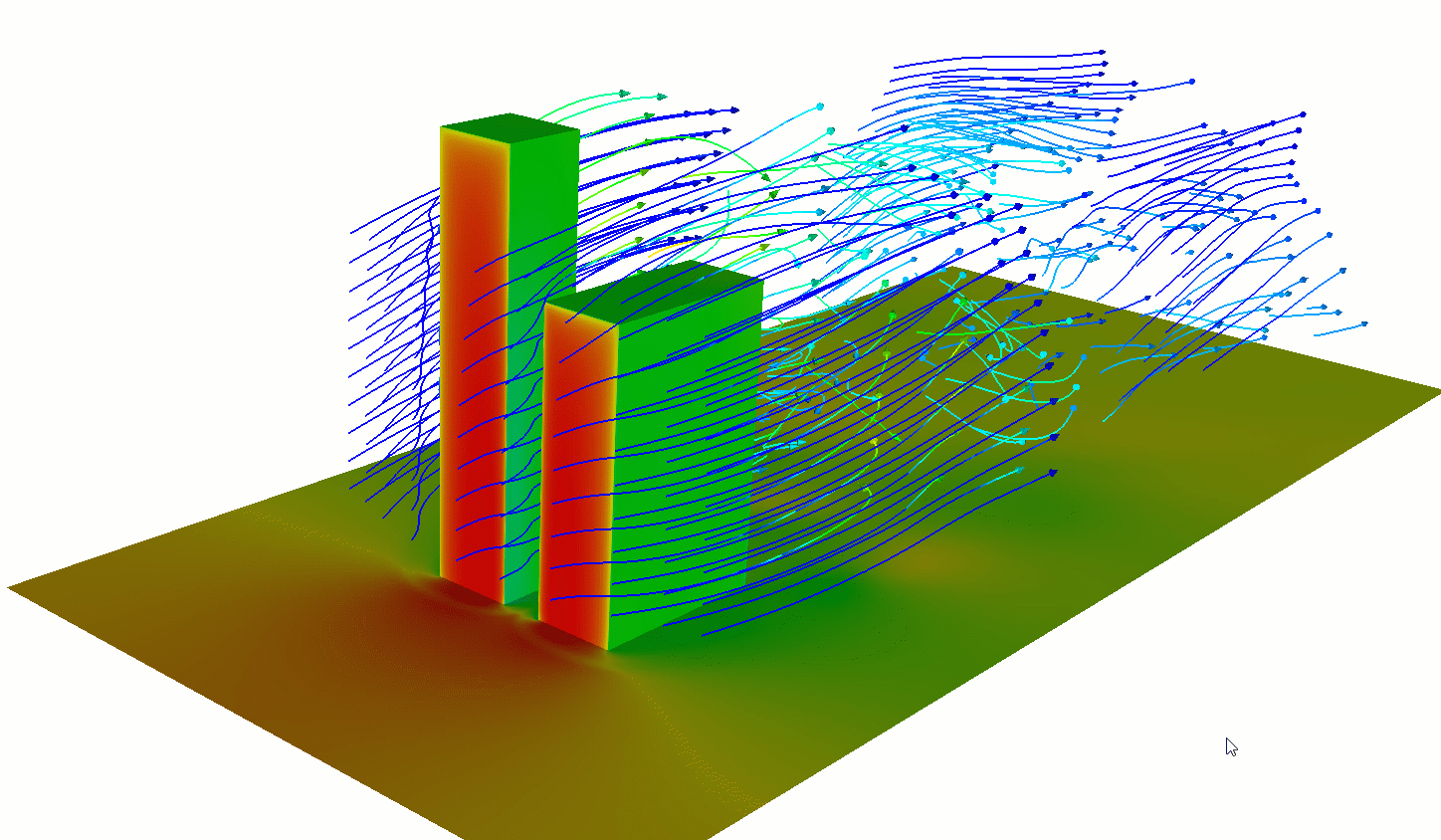Wind Flow Between Two Buildings - Simulation Example
Overview
Any building construction will create an impact on its immediate vicinity. A wind disturbance is one of the many potential impacts, as buildings may increase the wind speed, alter the wind direction, generate vortices, etc. These effects may impact pedestrian comfort and sometimes can be harmful or dangerous. The branch of civil engineering that focuses on the wind effects in urban areas is referred to as pedestrian wind comfort. Urban planners should take pedestrian wind comfort into account at the early design phase of any building or urban planning project.
In general, three fundamental methods can be used to assess wind impacts and hence wind pedestrian comfort: full-scale testing, reduced-scale testing and CFD modeling. In recent years, CFD modeling has become more and more popular because of its low cost and high efficiency. In particular, CFD is extremely valuable in the early design stage. By simulating a conceptual design, designers can identify potential problems — dangerous wind levels, for example — and correct them before moving to the prototyping stage. In this example, the wind flow between a high-rise and a low-rise building will be simulated and analyzed.


Objective
Setup
Results & Discussion
